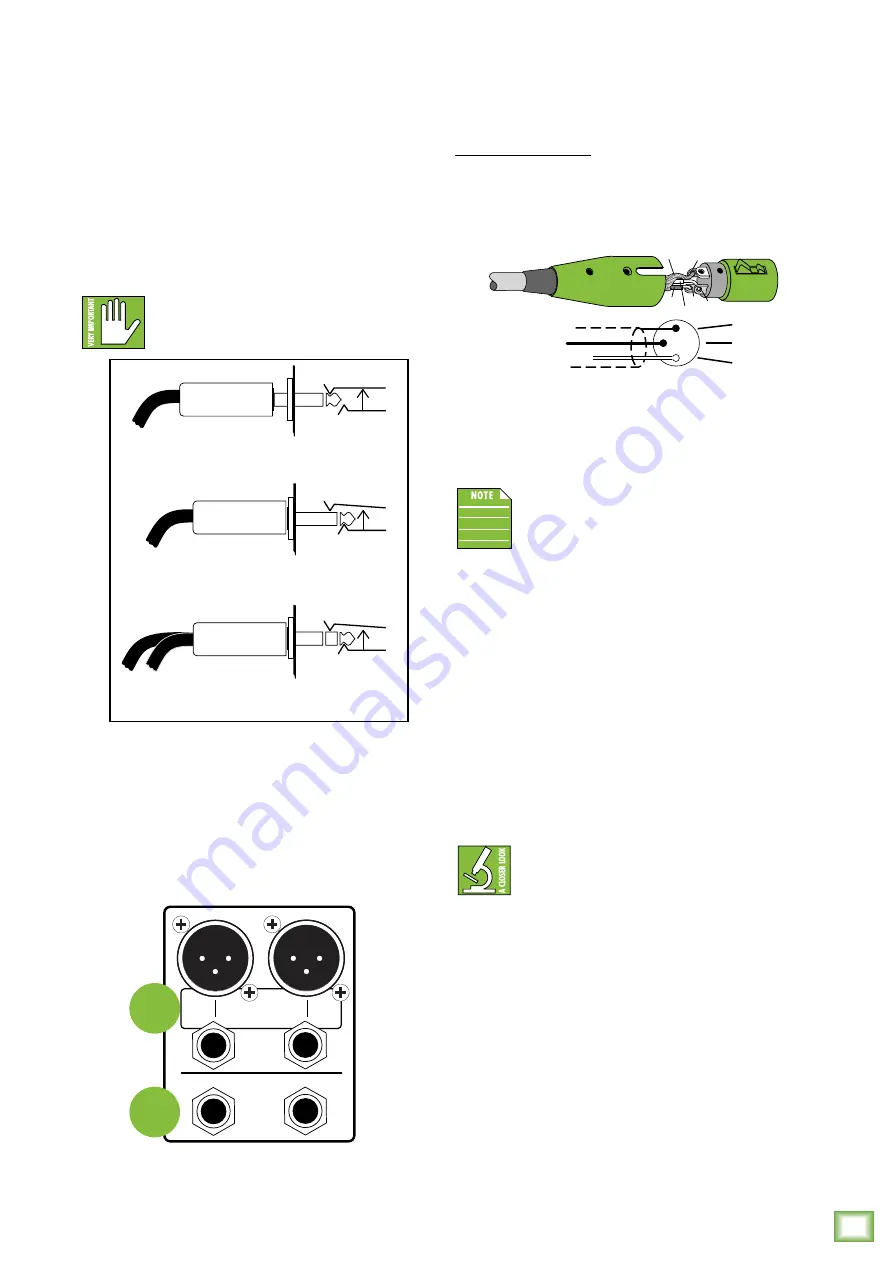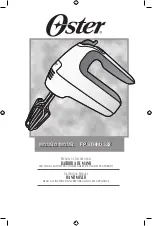
11
Owner
’s Manual
Owner’s Manual
Insert jacks may be used as channel direct outputs;
post-gain, and pre-EQ. If you insert a TS (mono) 1/4"
plug only partially (to the first click) into an insert jack,
the plug will not activate the jack switch and will not
open the insert loop in the circuit (thereby allowing
the channel signal to continue on its merry way through
the mixer). This allows you to tap out the channel signal
without interrupting normal operation.
If you push the 1/4" TS plug in to the second click,
you will open the jack switch and create a direct out,
which does interrupt the signal in that channel.
See illustration below.
Do not overload or short-circuit the signal
you are tapping from the mixer. That will
affect the internal signal.
8. Main Outputs
The main outputs provide a line-level signal
that represents the end of the mixer chain, where
the fully mixed stereo signal enters the real world.
Connect these to the left and right inputs of your
main power amplifiers, powered speakers, or
serial effects processor (like a graphic equalizer
or compressor/limiter).
Direct out with no signal interruption to master.
Insert only to first “click.”
Channel Insert jack
Channel Insert jack
Channel Insert jack
Direct out with signal interruption to master.
Insert all the way in to the second “click.”
For use as an effects loop.
(TIP = SEND to effect, RING = RETURN from effect.)
MONO PLUG
MONO PLUG
STEREO
PLUG
R
L
BAL/
UNBAL
R
L
BAL/
UNBAL
CONTROL
ROOM
MAIN OUTS
8
9
The male XLR connectors provide a balanced
line-level signal and is wired as follows, according
to standards specified by the AES (Audio Engineering
Society):
XLR Balanced Wiring:
Pin 1 = Shield (ground)
Pin 2 = Positive (+ or hot)
Pin 3 = Negative (– or cold)
In addition to accepting balanced XLR connectors,
the main outputs may also accept 1/4" connectors
driven by balanced or unbalanced sources. Wiring
diagrams for both connectors are presented on the
previous page.
The XLR outputs are 6 dB hotter than
the TRS outputs. So when the meters
read “0”, the TRS outputs are at 0 dBu.
9. Control Room Out Jacks
These 1/4" jacks are usually patched
to the inputs of a control room amplifier, studio
monitors or a headphone distribution amplifier.
The control room outputs may also be used for other
applications. The sound quality is just as impeccable
as the main outputs. It may be used as an additional
main mix output and this one will have its own level
control. However, be aware that if a solo switch
is engaged, the mix will be interrupted:
When a channel’s solo switch is engaged,
any existing selection is replaced by the solo
signal, appearing at the control room
outputs and headphones. The audible solo levels
are then controlled by the control room knob.
The solo levels appearing on the meters are not
controlled by the control room knob – you would
not want that, anyway. What you do want to see
is the actual channel level on the meters regardless
of how loud the control room output level might be.
2
1
SHIELD
COLD
HOT
3
SHIELD
COLD
HOT
3
2
1












































